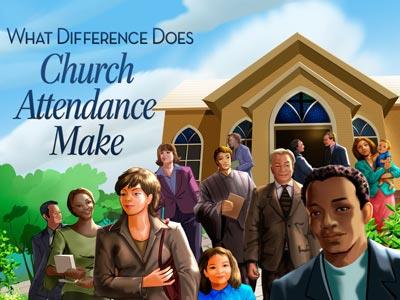-
Journey Through Acts (Part 2) Series
Contributed by Scott Bayles on Jan 16, 2024 (message contributor)
Summary: As we study this snapshot of the early church life, a pattern emerges: they focused on gathering, on the Gospel, on goodwill and on glorifying God. Because the early church maintained this four-fold focus along their journey, God continually added to their number those who were being saved.
The Journey: Following Jesus through Acts (2)
Scott Bayles, pastor
Scripture: Acts 2:42-47
Blooming Grove Christian Church: 7/3/2017
If you were with us last week, you know we began a ten-week journey through the book of Acts. It’s a faith-journey that began on a remote hillside near Jerusalem, where Jesus said goodbye to his followers and ascended into heaven. But before he left, he gave them the proof of his resurrection, the power of the Holy Spirit, and a purpose to fulfill.
After Jesus ascended into heaven, Peter, James, John and the other disciples set out on their own journey to continued what Jesus started. Their journey is the story of a movement that burst forward like a just open fire-hydrant out of Jerusalem and spilled into the ends of the earth.
On Pentecost, after the coming of the Holy Spirit, the small congregation of 120 believers exploded! Peter preached to a standing room only crowd on the Temple grounds. In one day three thousand people came to faith in Christ. Now what do they do? The answer is found in Acts 2:42-47. If you have Bible in your pew or on your phone, open it up to Acts 2 and let’s read this short passage together.
They devoted themselves to the apostles’ teaching and to fellowship, to the breaking of bread and to prayer. Everyone was filled with awe at the many wonders and signs performed by the apostles. All the believers were together and had everything in common. They sold property and possessions to give to anyone who had need. Every day they continued to meet together in the temple courts. They broke bread in their homes and ate together with glad and sincere hearts, praising God and enjoying the favor of all the people. And the Lord added to their number daily those who were being saved. (Acts:42-27 NIV)
Books about church planting, church health, and church growth are popular among church leaders today. Seminars about the church abound, with pastors and church boards eager to copy the techniques of a successful pastor or a fast-growing congregation. But this one paragraph offers a snapshot of the church a few days old. This handful of verses not only provides a concise summary of what the early church was all about, it provides a model that can be applied to the modern church, as well.
So what was the early church all about? As I read this paragraph I see a four-fold focus. First, the early church focused on gathering.
• GATHERING
Whether it’s the temple porch, a living room, a hillside, a prison, or a building specially constructed for Christians, God’s people gather together to reap the benefits of togetherness—and they’ve done so from the very beginning.
Notice again how Luke describes the church: “All the believers devoted themselves… to fellowship… They met together…worshipped together…met in homes… and shared their meals with great joy” (Acts 2:42-46 NLT).
Really, this is just the tip of the iceberg. Elsewhere, the Bible says that Christians are put together, joined together, built together, members together, heirs together, fitted together, held together, and will be caught up together. There’s a lot of togetherness in Christ’s church!
I’ve said many times before: Everyone needs a place where they belong, where people smile when you arrive and say, “See you soon!” when you leave. A place that fits you like a favorite pair of jeans, that’s as welcoming as your much-loved and much-worn recliner at home. That’s the way we’re made. Not to be isolated. Not to be alone. Even in the perfect paradise of Eden, God said, “It is not good for man to be alone” (Genesis 2:18). Modern psychology confirms that.
Stephen Ilardi, writing for Psychology Today, calls social isolation “a modern plague,” noting that “25% of Americans have no meaningful social support at all—not a single person they can confide in.” This isolation takes its toll, making us more vulnerable to mental illness, depression and addiction.
Max Lucado tells of a woman who know all about loneliness. Max’s friend Steve worked at a pharmacy while attending the University of Texas. His primary job was to deliver supplies to nursing homes, but every four days he had another stop along his route. He shouldered a large jug of water and carried it to an apartment building some fifty feet behind the pharmacy. His costumer was an older woman, perhaps in her seventies, who lived alone in a dark, sparse and tarnished apartment. She had no other source of water. She relied on his delivery for four days of washing, bathing and drinking. Municipal water was considerably cheaper. But rather than connect to the city water supply, she opted for a delivery. Why? The answer was the delivery system. Yes, the city water was cheaper and more practical. But the city would only send water, not a person. She preferred to pay more and see a human being than pay less and see no one.

 Sermon Central
Sermon Central



